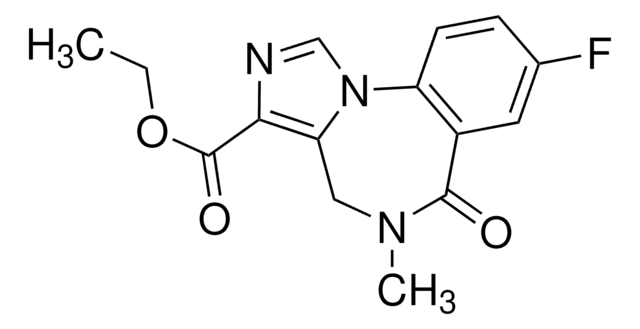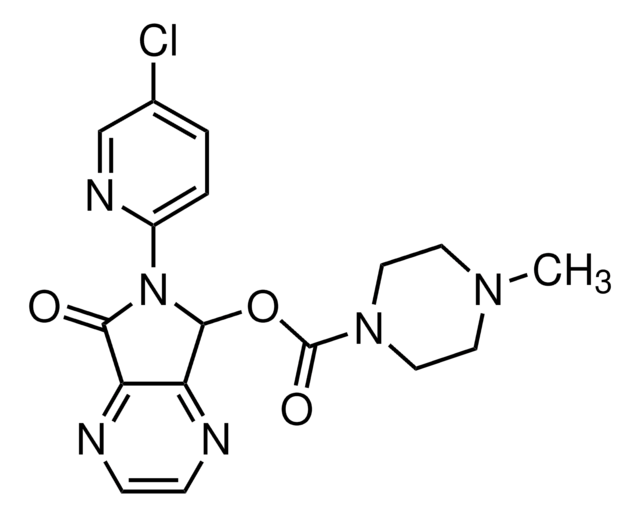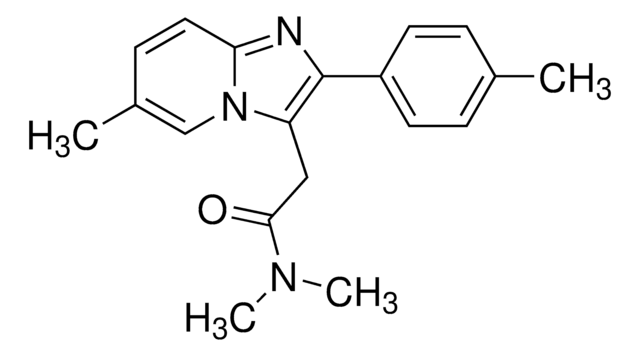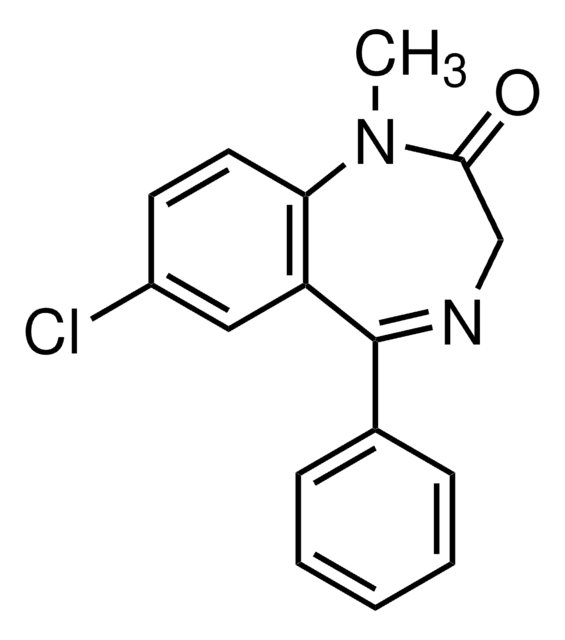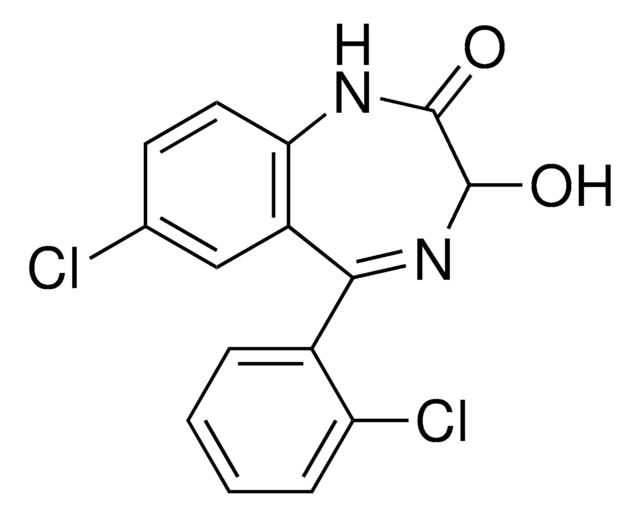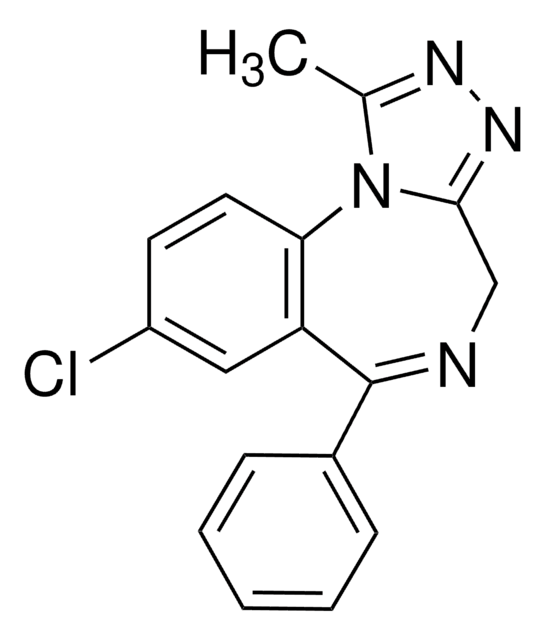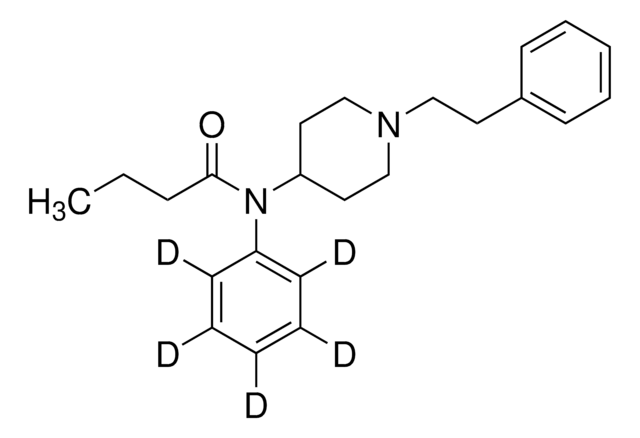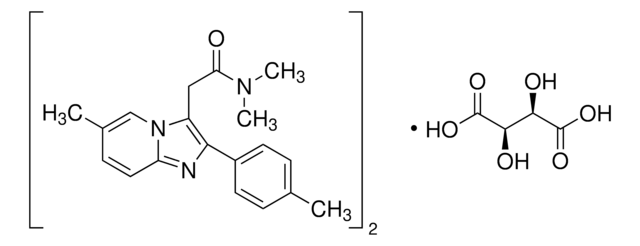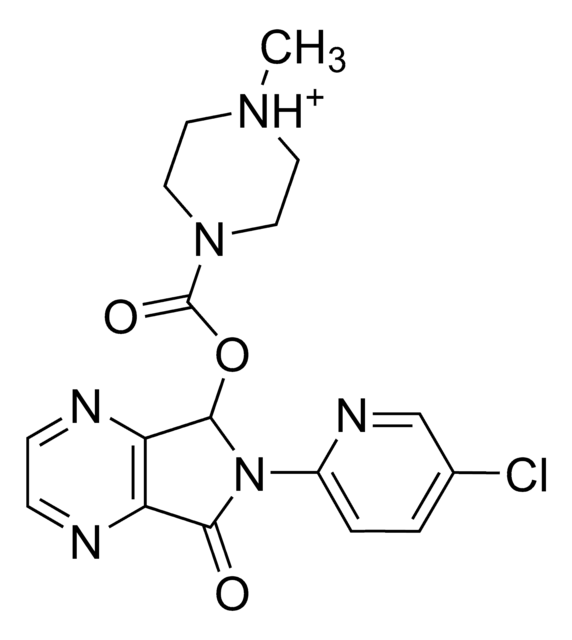B6434
Bretazenil
≥96% (HPLC), solid
Synonym(s):
9H-Imidazo[1,5-a]pyrrolo[2,1-c][1,4]benzodiazepine-1-carboxylic acid, Ro 16-6028
About This Item
Recommended Products
Quality Level
assay
≥96% (HPLC)
form
solid
color
white
solubility
DMSO: 24 mg/mL
H2O: insoluble
originator
Roche
storage temp.
2-8°C
SMILES string
[H][C@@]12CCCN1C(=O)c3c(Br)cccc3-n4cnc(C(=O)OC(C)(C)C)c24
InChI
1S/C19H20BrN3O3/c1-19(2,3)26-18(25)15-16-13-8-5-9-22(13)17(24)14-11(20)6-4-7-12(14)23(16)10-21-15/h4,6-7,10,13H,5,8-9H2,1-3H3/t13-/m0/s1
InChI key
LWUDDYHYYNNIQI-ZDUSSCGKSA-N
General description
Application
Biochem/physiol Actions
Features and Benefits
wgk_germany
WGK 3
flash_point_f
Not applicable
flash_point_c
Not applicable
ppe
Eyeshields, Gloves, type N95 (US)
Certificates of Analysis (COA)
Search for Certificates of Analysis (COA) by entering the products Lot/Batch Number. Lot and Batch Numbers can be found on a product’s label following the words ‘Lot’ or ‘Batch’.
Already Own This Product?
Find documentation for the products that you have recently purchased in the Document Library.
Related Content
DISCOVER Bioactive Small Molecules for Neuroscience
Our team of scientists has experience in all areas of research including Life Science, Material Science, Chemical Synthesis, Chromatography, Analytical and many others.
Contact Technical Service